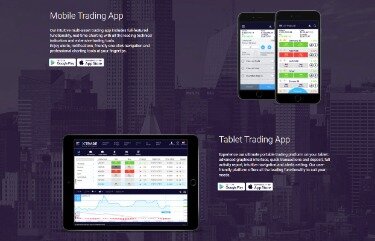Cryptocurrency News
Derivative Collateral Definition
Contents
By having their transactions collateralised, these institutions are able to increase their trading capacity with counterparties whose credit limits would otherwise be reached. A derivative is a financial contract between two or more parties – a buyer and a seller – that derives the value of its underlying asset. Specifically, a derivative contract gets its value from various asset classes such as commodities like wheat, gold, or oil, financial instruments like stocks, bonds, market indexes, currencies, or any other asset type. A derivatives contract is an agreement to buy or sell a specific number of shares of a stock, a bond, an index, or any other asset at a specific date. Meanwhile, the value of the contract fluctuates with the price of the underlying asset. The exchange itself acts as the counterparty for each exchange-traded derivative transaction.
- There were no legal standards, and most calculations were performed manually on spreadsheets.
- Hedging Obligation of any Person means any obligation of such Person pursuant to any Interest Rate Agreement, Currency Exchange Protection Agreement, Commodity Price Protection Agreement or any other similar agreement or arrangement.
- The price determined in the contract at which the underlying asset can be bought or sold is called the strike price, also known as the exercise price, as traders can exercise their right to buy or sell at that cost.
- Of the ISDA collateral documents, the New York law Credit Support Annex is the most popular with an estimated 59% of collateral agreements being documented under it, according to ISDA’s recent margin survey.
- The lender can choose to pursue legal action against the borrower to recoup any balance remaining.
Of the 55 risk professionals surveyed, the most common response was “daily operational issues.” Other concerns included fragmentation of their front, middle and back office operations, a lack of timely, quality data, and re-papering/renegotiation of contracts. For example, party A borrows money from party B, but party B is scared that party A will default and can’t repay. They purchase a credit default swap from party C, which guarantees party B that they will cover the loan if party A defaults, earning interest from the contract but taking on a risk. They can exchange predictability for risk and vice versa, primarily used by financial institutions to earn a profit – the most common type is an interest rate swap. A call option gives the call option buyer the right to buy an asset at a strike price until the contract’s expiry date.
Managing counterparty risk with collateral
Moreover, using leverage can cut both ways – it is both an advantage and a disadvantage. Leverage can amplify returns, but losses can also exceed the money invested. Over-the-counter derivatives contracts are also subject to counterparty risk, making them blockchain news and features hard to predict and value. When the underlying stock’s price falls, a put option will benefit in value. Put options give the option buyer the right to sell, but not the obligation to sell, the asset at a price stated in the contract until its expiry.

Via an exchange swap, both businesses can get a loan with a better interest rate and terms in their respective countries, getting exposure to their desired currency at lower interest rates. For example, a bank has given out millions of dollars worth of loans to thousands of people and expects all to pay back the loan in full. To counteract this the 10 best places to buy bitcoin in 2020 risk, you can purchase a credit default swap, which acts as insurance in case of a potential default. His friend Jim, who works at a large investment bank, doesn’t mind risk and is willing to swap with him. Jim’s firm takes on the floating variable rate loan, whereas Peter will start paying a fixed-rate interest of $1,000 per month to Jim.
Only 14% of Litecoin holders are currently in profit, while Ethereum’s is at 51%
Once a simple operational process, it is now a risk-based process in which counterparties exchange collateral with an eye on the liquidity risk it creates. Focusing again on the English law governed ISDA collateral agreements, the implementation of the directive means that the two major advantages of using the Credit Support Annex over the Credit Support Deed are removed. In fact there is now perhaps a small advantage in using the Credit Support Deed. In this scenario, the collateral provider would have a proprietary claim against the excess collateral rather than, as would be the case under the Credit Support Annex, an unsecured claim against the collateral taker for an amount corresponding to the excess collateral provided. Of the ISDA collateral documents, the New York law Credit Support Annex is the most popular with an estimated 59% of collateral agreements being documented under it, according to ISDA’s recent margin survey. Whilst I do not intend to discuss the New York law Credit Support Annex in any significant detail, it is worth noting that it allows the collateral taker to use and dispose of the pledged collateral.
- Notwithstanding the foregoing, the Secured Party agrees that if GMAC IM agrees to release its security interest with respect to any of the Derivative Collateral , the Secured Party will also release its security interest on such released Derivative Collateral.
- A call option gives the call option buyer the right to buy an asset at a strike price until the contract’s expiry date.
- Gives an advanced clearing solution for both OTC derivatives and exchanged traded derivatives through SG Prime Services strong track record.
- Collateralization is the use of a valuable asset to secure a loan against default.
- The requirement to post collateral is a key reform that makes the derivatives market more transparent, resilient and safe.
For example, if a home is valued at $200,000, and $125,000 remains on the primary mortgage, a second mortgage or HELOC will be available only for as much as $75,000. Use a financial institution with which you already have a relationship if you’re considering a collateralized personal loan. When a homebuyer obtains a mortgage, the home serves as the collateral for the loan.
International Swaps and Derivatives Association
Financial futures are derivatives based on treasuries, indexes, currencies, and more. They’re often used by financial institutions to hedge long positions held in the underlying security. Another defining characteristic of exchange-traded derivatives is their mark-to-market feature.
- The most common interest rate swap is trading a loan with a variable interest rate for a fixed interest rate loan.
- Collateral management is the method of granting, verifying, and giving advice on collateral transactions in order to reduce credit risk in unsecured financial transactions.
- However, they are leveraged, which means the investor doesn’t have to invest the total value of the assets to enter a trade.
With constantly evolving global regulations and increased margin requirements across cleared and uncleared transactions, counterparty risk must be managed holistically — no matter where or why collateral is held. Our collateral services automate the collateral management process over the life of the transaction, from margin call calculation to global reporting. Exchange-traded derivatives include options, futures, and other financial contracts that are listed and traded on regulated exchanges such as the Chicago Mercantile Exchange , International Securities Exchange , the Intercontinental Exchange , or the LIFFE exchange in London, to name a few. The practice of putting up collateral in exchange for a loan has long been a part of the lending process between businesses. With more institutions seeking credit, as well as the introduction of newer forms of technology, the scope of collateral management has grown. Increased risks in the field of finance have inspired greater responsibility on the part of borrowers, and it is the aim of the collateral management to make sure the risks are as low as possible for the parties involved.
What Is an Exchange-Traded Derivative?
Forwards contracts are settled when the contract expires, rather than at the end of the day like for futures. Just like futures, forwards are paid or settled on a cash or a delivery basis. Two sides take out a loan in foreign currencies but pay back each other’s loan interest rates instead. For example, if either party’s loan repayment structure or investment goals have changed, each can benefit from the other party’s cash flow stream. On the other hand, a call option is a bet that the price of the underlying asset will rise – the value of a call option increases when the asset price increases, and its value decreases when the asset price decreases. Anderson is CPA, doctor of accounting, and an accounting and finance professor who has been working in the accounting and finance industries for more than 20 years.

Provided that the relevant conditions are satisfied, institutions can report exposure on a collateralized basis and therefore reduce the amount of regulatory capital that is required. Over the past decade, collateral has become an increasingly significant tool in the over-the-counter derivatives market, with the International Swaps and Derivatives Association estimating there is some USD1.017 trillion in use and expectations that volumes will continue to increase. Gives an advanced clearing solution for both OTC derivatives and exchanged traded derivatives through SG Prime Services strong track record.
An investor borrows money from a broker to buy shares, using the balance in the investor’s brokerage account as collateral. The loan increases the number of shares the investor can buy, thus multiplying the potential gains if the shares increase in value. If the shares decrease in value, the broker demands payment of the difference. In that case, the account serves as collateral if the borrower fails to cover the loss. With our global derivatives platform, you can automate processing across your middle and back offices. From trade confirmation and allocations to settlement and reporting, our formats link to central counterparties and industry utilities.
Establishment of collateral relationship
Interest earned on collateral can be complicated by the current negative-rate regime dictating monetary policy in Asia and increasingly in Europe. The anomaly can be resolved by negotiating a floor with the bank when the rate hits zero or following ISDA’s 2014 guidance, which cryptocurrency wallet guide for beginners assesses the absolute value of the negative rate. Additionally, the valuation agent should be clearly defined in contracts to mitigate time-intensive and resource-exhaustive legal risks. This enhanced market access helps diversify and further mitigate counterparty risks.
